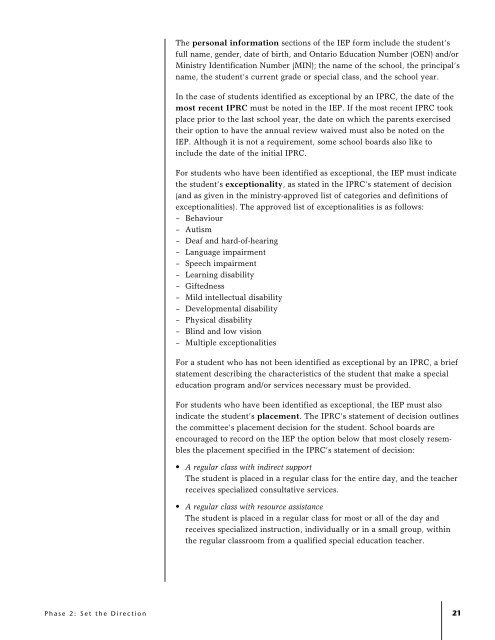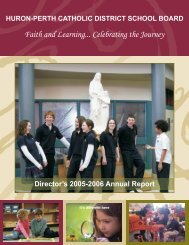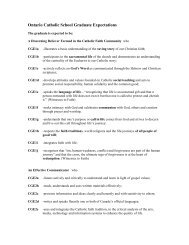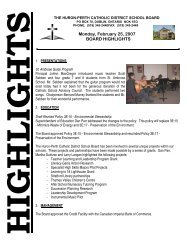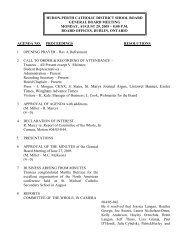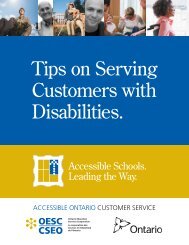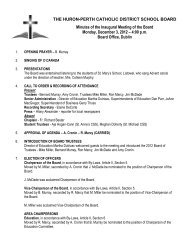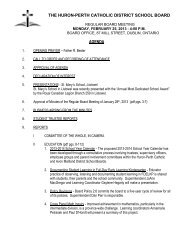The Individual Education Plan (IEP) - A Resource Guide, 2004
The Individual Education Plan (IEP) - A Resource Guide, 2004
The Individual Education Plan (IEP) - A Resource Guide, 2004
Create successful ePaper yourself
Turn your PDF publications into a flip-book with our unique Google optimized e-Paper software.
<strong>The</strong> personal information sections of the <strong>IEP</strong> form include the student’s<br />
full name, gender, date of birth, and Ontario <strong>Education</strong> Number (OEN) and/or<br />
Ministry Identification Number (MIN); the name of the school, the principal’s<br />
name, the student’s current grade or special class, and the school year.<br />
In the case of students identified as exceptional by an IPRC, the date of the<br />
most recent IPRC must be noted in the <strong>IEP</strong>. If the most recent IPRC took<br />
place prior to the last school year, the date on which the parents exercised<br />
their option to have the annual review waived must also be noted on the<br />
<strong>IEP</strong>. Although it is not a requirement, some school boards also like to<br />
include the date of the initial IPRC.<br />
For students who have been identified as exceptional, the <strong>IEP</strong> must indicate<br />
the student’s exceptionality, as stated in the IPRC’s statement of decision<br />
(and as given in the ministry-approved list of categories and definitions of<br />
exceptionalities). <strong>The</strong> approved list of exceptionalities is as follows:<br />
– Behaviour<br />
– Autism<br />
– Deaf and hard-of-hearing<br />
– Language impairment<br />
– Speech impairment<br />
– Learning disability<br />
– Giftedness<br />
– Mild intellectual disability<br />
– Developmental disability<br />
– Physical disability<br />
– Blind and low vision<br />
– Multiple exceptionalities<br />
For a student who has not been identified as exceptional by an IPRC, a brief<br />
statement describing the characteristics of the student that make a special<br />
education program and/or services necessary must be provided.<br />
For students who have been identified as exceptional, the <strong>IEP</strong> must also<br />
indicate the student’s placement. <strong>The</strong> IPRC’s statement of decision outlines<br />
the committee’s placement decision for the student. School boards are<br />
encouraged to record on the <strong>IEP</strong> the option below that most closely resembles<br />
the placement specified in the IPRC’s statement of decision:<br />
• A regular class with indirect support<br />
<strong>The</strong> student is placed in a regular class for the entire day, and the teacher<br />
receives specialized consultative services.<br />
• A regular class with resource assistance<br />
<strong>The</strong> student is placed in a regular class for most or all of the day and<br />
receives specialized instruction, individually or in a small group, within<br />
the regular classroom from a qualified special education teacher.<br />
Phase 2: Set the Direction<br />
21


